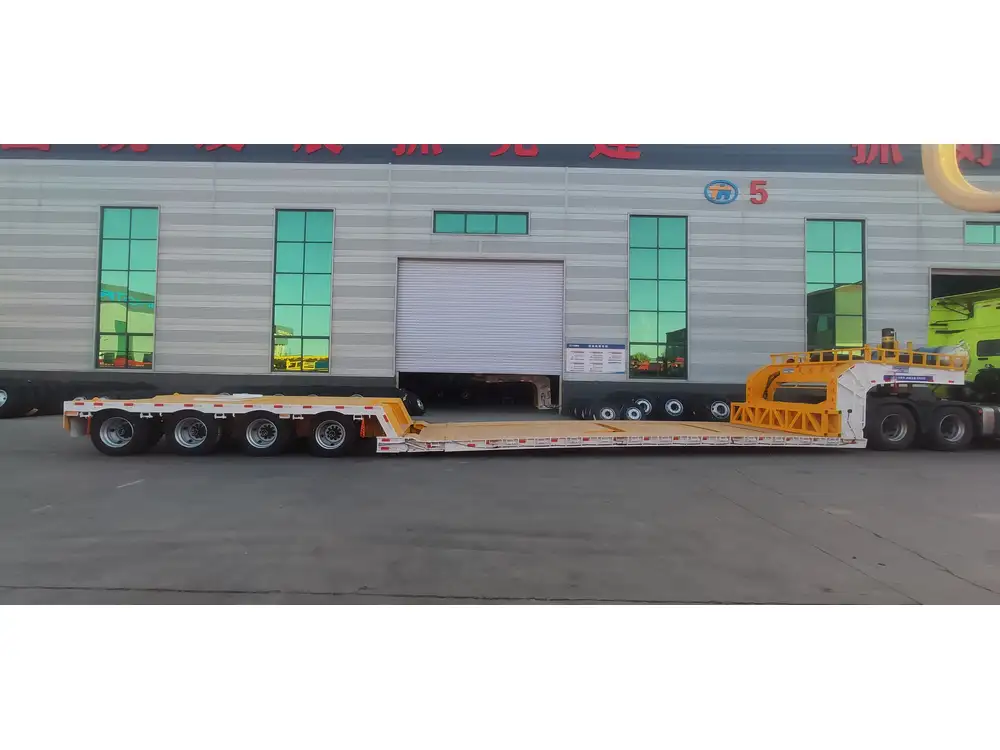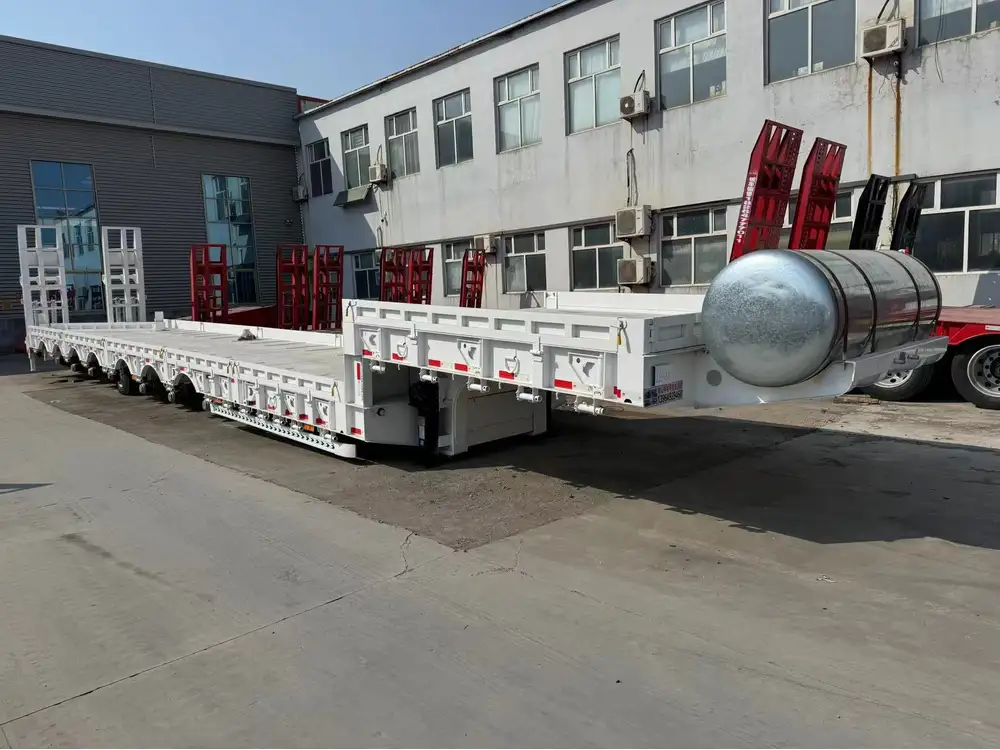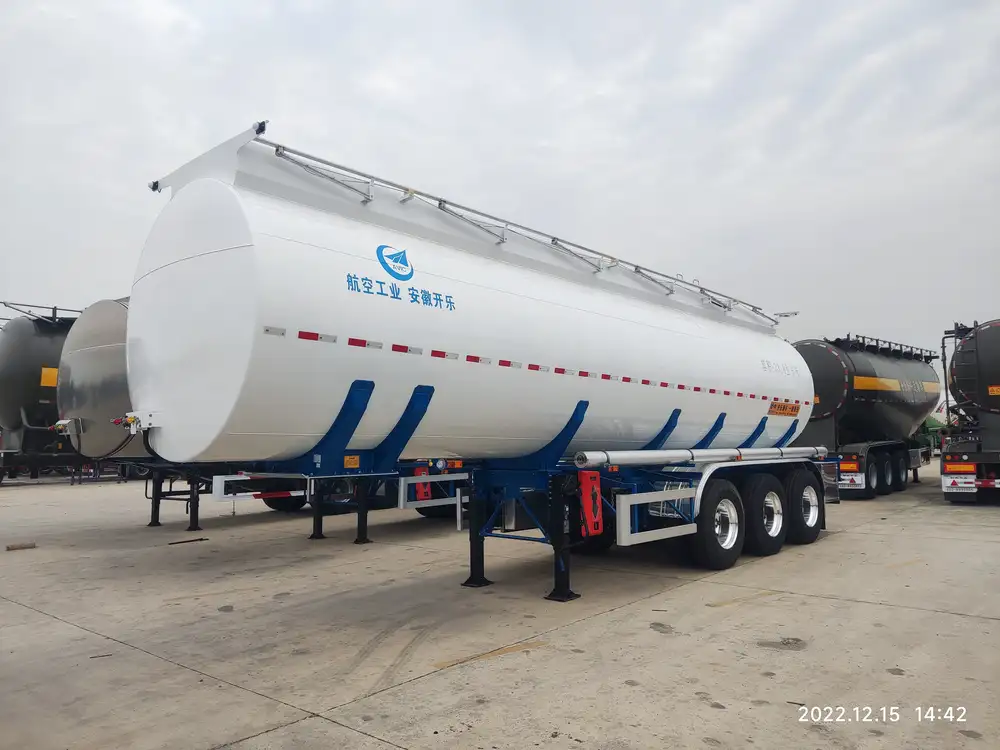Hooking up a semi-trailer is a fundamental skill for anyone working in the trucking industry. It’s a task that requires careful technique, precision, and knowledge of both the truck and the trailer. This guide is designed to provide a thorough understanding of the process involved in coupling a semi-trailer, ensuring safety and efficiency on the road. Below are the essential steps, tips, and visual aids to effectively perform this crucial operation.
Understanding the Components of a Semi-Trailer
To successfully hook up a semi-trailer, one must first be familiar with the basic components involved in the coupling process:
| Component | Description |
|---|---|
| Fifth Wheel | A coupling device located on the truck, allowing the trailer to pivot and move. |
| King Pin | A vertical pin attached to the front of the trailer, which fits into the fifth wheel. |
| Safety Chains | Chains that provide extra security by connecting the trailer to the towing vehicle. |
| Pneumatic Lines | Flexible tubes that connect the trailer’s braking system to the truck’s air brakes. |
| Electrical Connector | A plug that connects the trailer’s lighting system to the truck. |
Understanding these components will help clarify the process and ensure that each step is conducted correctly.
Step-by-Step Guide to Hooking Up a Semi-Trailer

Step 1: Preparing to Hook Up
Before you commence with the coupling process, ensure that both the semi-truck and the trailer are on level ground. Completing the following checks is essential:
- Check the truck’s braking system.
- Inspect the fifth wheel for cleanliness. Remove any debris that could interfere with the hook-up.
- Verify the trailer’s king pin alignment. The pin should be clean, free of rust or debris.
Step 2: Positioning the Truck
Drive the semi-truck towards the trailer, aligning the fifth wheel directly under the king pin. Utilize the following tips for precise alignment:
- Adjust speed: Move forward slowly to make corrections as necessary.
- Use mirrors and a spotter, if available, to gauge alignment.
Step 3: Coupling the Trailer
While ensuring the truck is in a low gear and the parking brake is engaged, proceed with the coupling:
- Lower the trailer landing gear to lift the trailer off the ground.
- Drive forward until the king pin locks into the fifth wheel. You’ll feel and hear a click when they engage properly.
- Check for proper engagement by visually inspecting the gap between the fifth wheel and the king pin.

Step 4: Securing the Connection
Once engaged, it’s important to secure the connection:
- Engage safety latches on the fifth wheel, preventing accidental uncoupling during transit.
- Connect safety chains from the truck to the trailer, ensuring they are tightly secured.
- Attach the pneumatic lines to the trailer. Ensure that the connections are tight and free of leaks.
- Connect the electrical cable to ensure that trailer lights are functional.
Step 5: Inspecting the Setup
Safety inspections are non-negotiable before hitting the road:
- Check the height of the trailer. The trailer should ride evenly, not too high or too low.
- Walk around the unit inspecting all connections—airlines, electrical plugs, and safety chains.
- Inspect the brake lights and indicators to ensure all systems are functional.
Common Mistakes to Avoid When Hooking Up a Semi-Trailer
- Neglecting Pre-trip Inspections: Always conduct a thorough pre-trip inspection of the truck and trailer to prevent issues on the road.
- Improper Alignment: Failing to align the truck with the trailer can lead to a failed connection, causing damage or accidents.
- Forgetting to Secure the Safety Chains: This is critical for safety; always ensure that these are tightly fastened.
- Overlooking Electrical Connections: Engage the electrical connector properly to avoid malfunctioning lights.

Importance of Safety Features in Coupling a Semi-Trailer
Safety is paramount in the trucking industry. Each component of the coupler system plays an essential role in ensuring that the trailer remains attached during transit. Here’s why safety features matter:
- Safety Chains: These provide additional security, ensuring that if the primary connection fails, the trailer remains attached to the truck.
- Braking System Integrity: The pneumatic lines are critical for maintaining the truck’s ability to stop effectively, especially under heavy load conditions.
- Visibility: Proper lighting ensures that other road users can see your trailer at night or in poor weather.
Troubleshooting Common Issues When Hooking Up
Encounters with issues during the hook-up process are not uncommon. Below are solutions to frequent problems:
| Problem | Potential Cause | Solution |
|---|---|---|
| Trailer won’t latch | Misalignment of king pin and fifth wheel | Reverse slightly and realign before attempting again. |
| Brake lights not functioning | Electrical connection issue | Inspect the electrical connector for dirt or damage. |
| Loose or disconnected airlines | Damaged or worn-out lines | Replace damaged lines and ensure tight connections. |
Visual Learning: Utilizing Video Resources
For visual learners seeking a more in-depth understanding, various YouTube channels provide demonstrations and practical insights into hooking up a semi-trailer. These tutorials often showcase different scenarios and techniques that could enhance your learning experience. Some recommended channels include:
- TruckSafe – Specializes in trucking safety tips and demonstration videos.
- Trucking Academy – Offers comprehensive training including live demonstrations of trailer hook-ups.
- Road Warrior – Engaging content focusing on daily experiences of truck drivers, including tutorials.

Conclusion
Hooking up a semi-trailer may seem daunting at first, but with practice and a keen understanding of the components and processes involved, it becomes a manageable and essential skill. Maintaining safety and efficiency is key; therefore, adhering to the outlined steps not only ensures successful coupling but also safeguards the future of your operations on the road.
By regularly utilizing these techniques, checking equipment, and engaging with ongoing educational resources, you can enhance your capabilities and confidence in the trucking industry. Always remember that the detail in each step is critical to ensuring a secure and efficient transportation process. Happy trucking!



